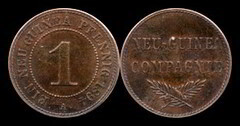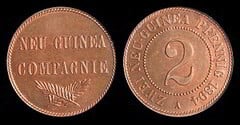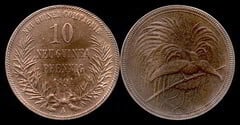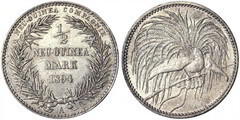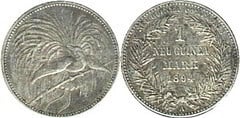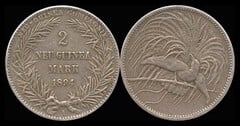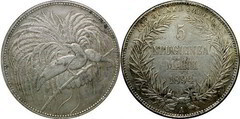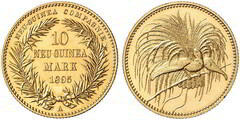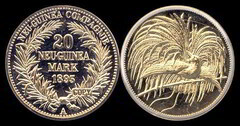German New Guinea Coin List
The monetary history of German New Guinea is fascinating and reflects the political and economic changes in the region. From its period as a German colony to its subsequent administration by other powers, the numismatics of this area have undergone several transformations.
Coinage during German rule
During the period of German control (1884-1914), German New Guinea used the German mark as its official currency. Specific coins were minted for the colony, including 1, 2 and 5 pfennig pieces in 1894, which featured unique designs with local motifs. These coins are now prized collector's items among numismatists due to their rarity and historical significance.
Subsequent monetary changes
After World War I, when Australia took control of the region, the Australian pound was introduced as legal tender. This change marked the end of the Deutschmark era in New Guinea. Subsequently, with Papua New Guinea's independence in 1975, the kina was established as the national currency, which remains in use to this day. Coins and banknotes from this period reflect the rich cultural and natural diversity of the country, becoming objects of interest to collectors around the world.
If you are a passionate collector, this catalog offers the possibility to create your own personal collection from this list. You can add your coins and generate a free PDF catalog from a complete database and our management tools.
German New Guinea is a country that does not exist today. It is now part of the Papua New Guinea old coins.
The most valuable and popular coins
The most valuable German New Guinea coins and sought after by collectors according to Foronum statistics are the following:

The valuation of these coins list has been achieved through a meticulous algorithm that considers the current market, taking into account aspects such as material, weight, diameter, edge, year of mintage, mint of manufacture and the number of coins produced. Coins with limited mintages and in good condition are usually among the most valuable.
Coin Catalog
German New Guinea | 1 pfennig
German New Guinea | 2 pfennig
German New Guinea | 10 pfenning
German New Guinea | 1/2 mark
German New Guinea | 1 mark
German New Guinea | 2 mark
German New Guinea | 5 mark
German New Guinea | 10 mark
German New Guinea | 20 mark
Other resources to find coins and banknotes of German New Guinea
Can't find what you are looking for? Take a look at our coin finder and speed up your searches within the collections of all collectors, or if you prefer you can search directly in the list of coin collectors and access their profile to see their collections.
